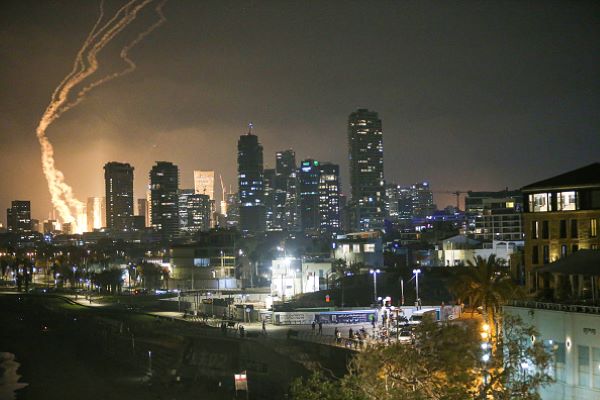.png)
Saibal Dasgupta is an author, veteran journalist, and noted China expert who has reported from Beijing since 2005 and contributes to global media and think-tanks.
June 26, 2025 at 4:10 AM IST
When Iran and Israel traded blows, it wasn’t just a fight between two regional heavyweights. It became a live demonstration for oil buyers, arms exporters, military planners, and nervous diplomats around the world, including India.
But beneath the missile trails, social media declarations, and press briefings during Israel-Iran conflict lay something more useful: a checklist of hard truths. Not just for Iran, but for any country hoping to secure its skies or protect its secrets. Israel eliminated Iran’s military leaders and nuclear scientists with carrom-board precision because it knew their locations, visible through satellite imagery.
Lesson 1: Watch your own people, particularly the flatterers
This knowledge came from betrayal from a section of local officials who relayed real-time information to well-entrenched American and Israeli intelligence agencies scattered across Iran. If this reflected the success of field and signal intelligence over phone and internet communications, it equally exposed the failure of Iran’s counter-intelligence. American agencies like the CIA are more successful because they have something to offer other than money. They can offer visas and asylum to those fearing persecution or simply seeking place under the American sun.
Lesson 2: A nuclear dream is hollow without air defence
It may seem odd that a country investing heavily in nuclear energy forgot to establish a reliable air defence system, a key element in modern-day war. Much of Israel’s success came from Iran’s porous air defence and its own four-layer shield that includes the famous “dome” anti-missile system. Israel intercepted and destroyed 90% of Iranian missiles mid-air.
Lesson 3: In geopolitics, most allies are fair-weather friends
China and Russia could have helped Iran with key support like air defence systems and additional missile launchers after many of their systems were destroyed in Israeli strikes. But they didn’t stick their neck out because the US was involved. Contrast this with Chinese support to Pakistan in the recent conflict with India. Even Hamas and the Houthis failed to mount the expected coordinated attacks. Reports suggest Tehran expected them to engage Israel in a three-cornered attack.
Lesson 4: Modern warfare is about air superiority, not troop numbers
Modern air warfare is primarily about air superiority—deploying sophisticated fighter jets, supersonic missiles, satellites, and stealth technology. The role of the standing army is on the wane. In some countries, it serves more as a domestic employment strategy than a frontline necessity. For instance, a swarm of military drones can cover 3-4 times more area than an infantry battalion or a couple of tanks.
Lesson 5: The US does not rely on regional allies during combat
The US neither needs—nor fully trusts—its allies in military operations. It did not use any of the eight military bases in Saudi Arabia, UAE, Qatar and the rest of the region to refuel 125 airplanes including B2 bombers involved in the “Operation Midnight Hammer” to target three nuclear sites in Iran. The bombers flew 37 hours from Missouri, US, using in-air refuelling from tanker aircraft.
Lesson 6: Multilateral forums are ineffectual during wartime
International and multilateral bodies like the UN, BRICS, SCO, QUAD and others become helpless spectators during a war. Joint military drills often hold little value when real wartime crises erupt.
Lesson 7: No substitute for indigenous defence R&D and manufacturing
Depending on other countries for hardware and spares is not a reliable option because the source country may have its own agendas and interests. Russia was unable to help Iran, pre- or mid-conflict, due to its own entanglement in Ukraine and its reluctance to antagonise the U.S.
Implementing some of these lessons—such as expanding domestic arms production—may involve significant expenditure. But others—like curbing information leaks—require only what Thomas Jefferson once said: the price of freedom is eternal vigilance.




